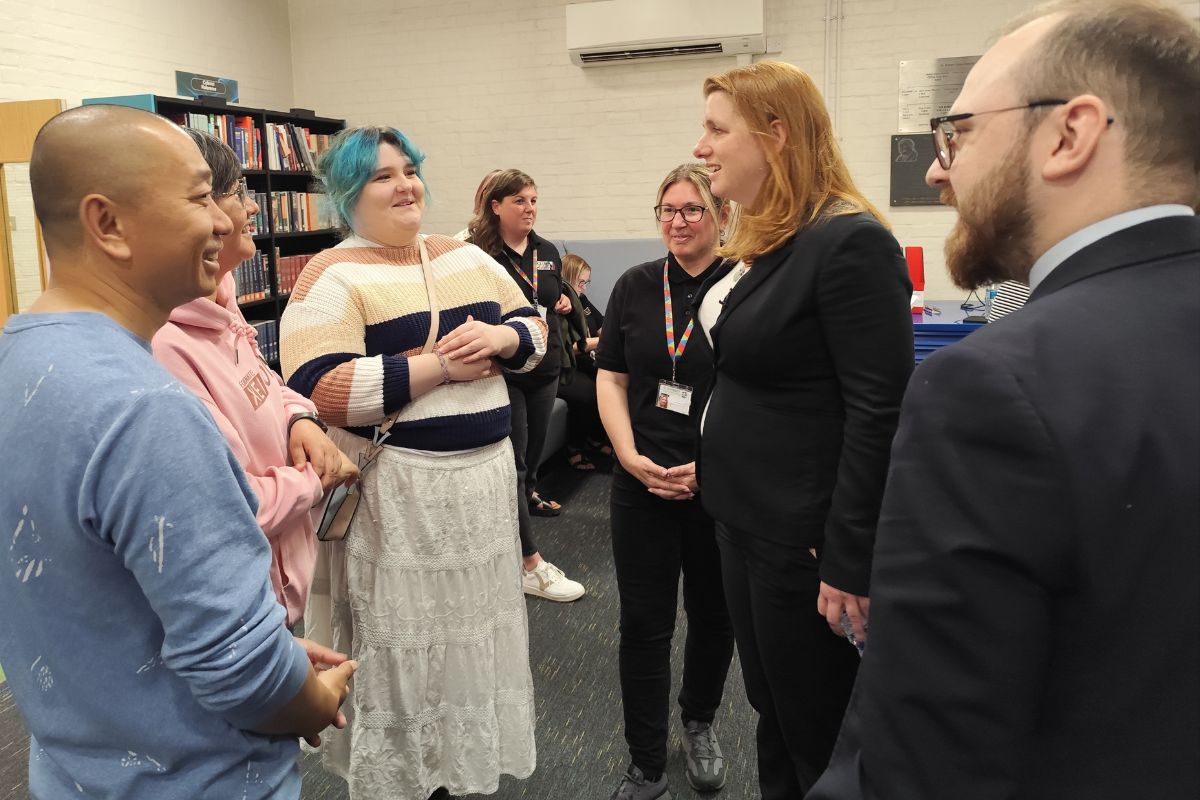The 4 Stages Of Transition From Campus Chatbot To Digital Assistant

When my fellow colleagues at Bolton College started to develop the Ada chatbot service we knew that she would eventually evolve into a campus digital assistant.
This following text summarises the four broad stages that Ada and her contemporaries will journey through before they exhibit the traits of a campus digital assistant.
The text also highlights a number of challenges that need to be addressed along the way.
Stage 1: The Know-It-All
It is an ambitious goal, but a campus chatbot has to connect to all key datasets at the institution if it is to serve with purpose. In most campuses students, teachers and support teams have to engage with multiple systems to retrieve information that enable them to carry out their day-to-day activities on the campus.
If the chatbot is connected to all the datasets on the campus the end user simply has to engage with a single campus chatbot to access the desired information. This means that information can be accessed with little or no friction. As we will see later, this will have a significant impact on the design and delivery of campus services.
The chatbot also needs to respond contextually to all enquiries. The service needs to be made aware of the person who is making an enquiry, it needs to know if the individual has access rights to that information and its responses need to reflect a student’s or teacher’s place within the student life-cycle.
One of the key traits of a campus chatbot service is that it needs to be available across multiple modalities; namely the web, mobile, smart speakers and other conversational devices.
Stage 2: The Helper
The chatbot starts to exhibit the traits of a digital assistant as it begins to help students, teachers and support teams with a wide range of day-to-day tasks and workflows.
The chatbot element will eventually represent a small component of the suite of services that the digital assistant offers to everyone on the campus. The digital assistant will nudge students to promote desired behaviour on the campus; such as improving the grade average for students or increasing the number of students who progress onto further studies, training or employment.
The digital assistant is able to support the most common tasks and workflows that are undertaken by everyone on the campus. The digital assistant’s ability to minimise the effort that is required to fulfill these tasks will mean that students, teachers and support teams will use legacy systems such as learning management systems, campus websites or campus apps less often or not at all.
Stage 3: The Connector
The digital assistant is embedded into all major campus services. The knowledge that it acquires in one service is used to inform other services across the campus. Ad-hoc services that were previously isolated from other services are now integrated via the means of the campus digital assistant.
The digital assistant should not be seen as a single service. It is informed by multiple services or agents which may be quite disparate in nature.
For example, agents will be tasked with supporting discrete functions such as compiling and distributing adaptive learning and assessment materials, marking student work, identifying students at risk, giving nudges to students, authoring daily student report cards or offering information, advice and guidance about university applications.
The agents that underly these services will work cooperatively with one another; enabling the digital assistant on the campus to deliver a cohesive service to every student and teacher on the campus.
Please note that I have assumed the ideal scenario of having a single all encompassing digital assistant on the campus. In this setting students, teachers and support teams will simply engage with a single digital assistant to access information and services to carry out day-to-day tasks and activities.
However, in the near term it is likely that many education vendors will build specialist proprietary chatbots or digital assistants to support users as they engage with their services or platforms.
If this is the case, there is a risk that students and staff on the campus will get a fragmented service from each chatbot or digital assistant; especially if these discrete services do not communicate or cooperate readily with one another.
Stage 4: The True Assistant
The digital assistant conducts itself with increasing autonomy as underlying machine learning models improve its ability to support everyone on the campus.
The service acts on behalf of every teacher and member of the student support team to deliver a personalised and contextualised service at scale to every student at the institution. It’s assistive capabilities transform how education services are designed, delivered and managed on the campus.
However, as digital assistants become commonplace their successes also bring a number of challenges to schools, colleges and universities that make use of them; particularly around their governance, their agency and how we can explain the actions that they make.
All digital services on the campus will become conversational in nature. We will converse with networked devices and services to carry out out day-to-day tasks and activities on the campus.
Aftab Hussain, Strategic ILT Lead, Bolton College











Responses